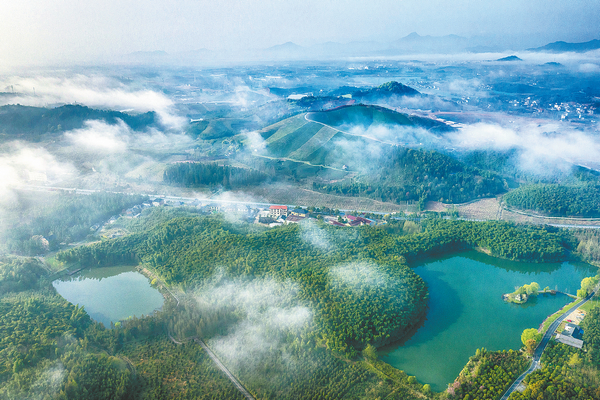

Discovery of a vast and intricate water conservation system shows the inventiveness of the ancient Liangzhu civilization in its bid to harness nature, Zhao Xu reports.
'Nothing is softer or more flexible than water, yet nothing can resist it," said ancient Chinese philosopher Laozi (Lao Tzu), who lived around the 6th century BC. The man, whose words still resonate powerfully with Chinese today, had no knowledge of the existence of the ancient city of Liangzhu, built around 3000 BC, at a time when the Chinese civilization, to which Laozi had contributed, was fast taking shape. Yet for those in the know, his remarks on water seem to sum up the history of Liangzhu, both the civilization and the city — the latter of which is known as "China's Neolithic Venice".
"The element of water is so integral to the story of Liangzhu, from the beginning to the very end," says Wang Ningyuan, who today is in charge of all the excavation done at the Archaeological Ruins of Liangzhu City, a UNESCO World Heritage Site in Hangzhou, Zhejiang province. "Water presented the Liangzhu people with both opportunities and challenges. To exploit the opportunities they took on the challenges; and in taking on the challenges they created something truly remarkable — a city sitting on a river-veined land and a civilization that stood proudly ahead of all its contemporaneous Neolithic cultures."
That land covers the lower reaches of the Yangtze River and the area surrounding the Taihu Lake, China's third-biggest freshwater lake. Today, it is one of China's major rice-producing regions. Those who decided to settle down here 5,000 years ago clearly had the lowland's vast potential in mind, says Wang.
"They knew that this fertile land, if properly tended, would give them what they needed for survival and more. Yet, at the same time, they were by no means ignorant of the dangers posed by water," he says.
Circled by mountains on three sides (north, west, and south), with only one side open to the alluvial plains and the funnel-shaped Hangzhou Bay to its east, the land of Liangzhu was particularly vulnerable to this natural element. Flooding and typhoons would come from the sea. The monsoon season lasted from April to October — it still does these days. The mountains only serve to increase precipitation by cooling off the rain-laden clouds as they climb their windward slopes.
"The downsides were obvious, but the Liangzhu people eventually decided that they were outweighed by the upsides," says Wang. "However, instead of subjecting themselves to the whims of nature, which they worshiped fervently, they went all out to shape their own destiny and proved their ingenuity as planners, surveyors, builders and engineers."